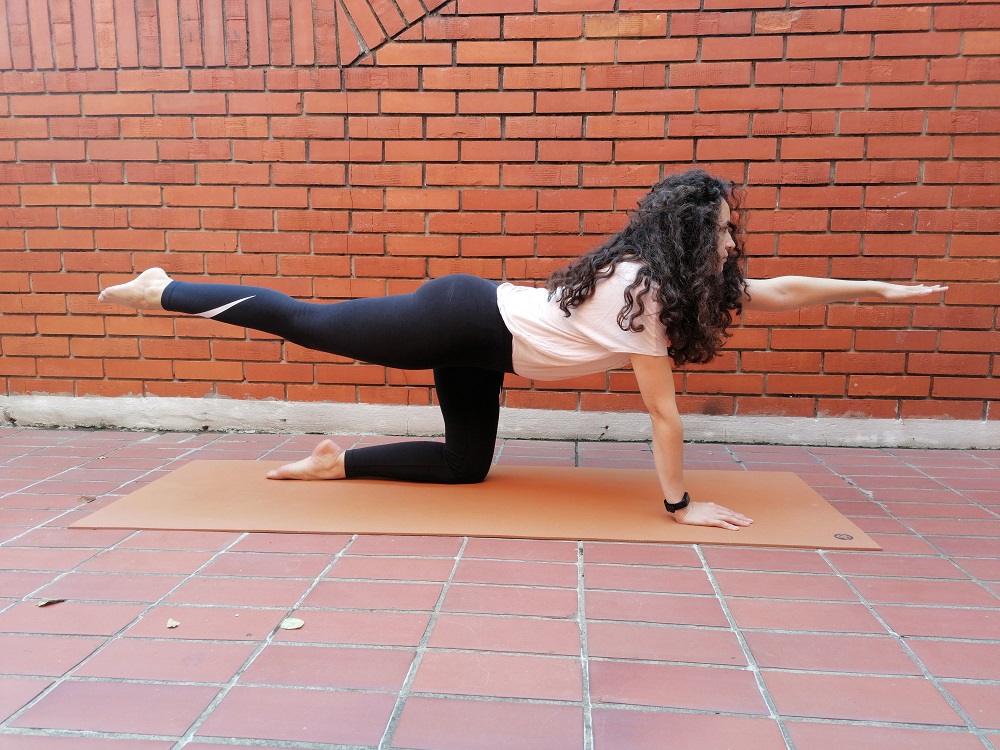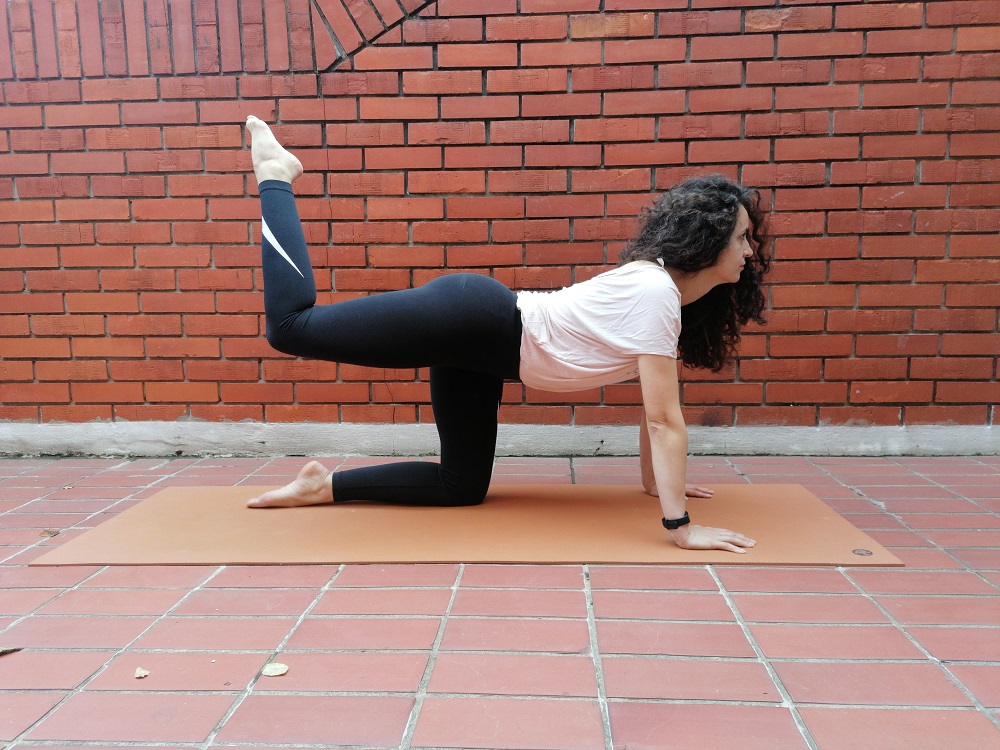In yoga, a large number of poses are named after animals. The main reason for this is that animals release their emotions through hormonal changes in their bodies. These changes in animals occur through stretching, twisting, and etc. It is believed that the yogis of that time believed that they could achieve enlightenment faster by imitating the movements of certain animals. Having that information in mind, the same applies to this pose: the pose of the tiger.
Practicing this pose, the practitioner stretches from the legs all the way to the back, just like when a tiger wakes up and stretches its entire body. The Sanskrit name for this pose is Vyaghrasana.
The tiger pose is classified as a beginner’s pose. However, since it is also a balance pose, it can be very challenging for practitioners who are at the beginning of their yoga practice. Especially for those who do not have such a well-developed sense of balance. Due to the fact that during the practice of this pose the back is stretched very finely. The tiger pose belongs to the so-called backbend group of poses. Therefore, it is crucial to perform this pose with great care, especially if you have recently experienced a back injury (within the past few months). There are certain modifications for this pose. The basic support in the tiger pose for most practitioners is a blanket that is placed under the knees. In that way, the knees are relieved of additional pressure and are protected from increased stress.
This pose nicely stretches and opens the hips and knees. With that in mind, you should also practice this pose with a dose of caution if you have recently had hip or knee injuries (within the past few months). It would certainly be best if, in cases of recent injuries to the lower back, hips or neck, you practice this pose in the presence of a teacher who has many years of experience, and also experience in so-called yoga therapy.
Unfortunately, there are certain groups of yoga practitioners who should not perform this pose such as pregnant women and people who have a herniated disc.
Considering that during this pose the practitioner relies heavily on his palms, therefore the wrists suffer more pressure, my recommendation is that the wrists should be thoroughly warmed up and stretched before practicing this pose. I advise this especially in cases where you practice more demanding variations of this pose. One of them can be a variation with a raised and stretched right arm and a raised and stretched left leg, and of course vice versa. During practicing this variation, the practitioner develops a sense of balance to a greater extent. But at the same time strengthens his core.
For this pose, as for most, the rule applies that it would be desirable to do certain preparatory poses before entering it. In the case of tiger pose, the preparatory poses are: cow pose, cat pose, and table pose.
You can practice cow and cat pose as a dynamic pose. In that case, do a maximum of ten repetitions. Of course, you can certainly practice these poses in their static variants.
The table pose has its basic version, which is static. You should practice it before the cat and cow poses.
However, if you want to work on strengthening your core there is also a dynamic table pose. In this variation, emphasize the toes, spread your palms as much as possible and push yoga mat hard with your palms, as if you want to push the mat down, to pass through the floor. It is important that you have a firm and stable support when performing this movement. Raise your knees, not too much, about 5 to 10 centimeters from the yoga mat. When you are in that pose, slowly move your knees down, stop just above the mat, then bring them back up. With this movement alone, the hips also move. Make sure your hips are fixed, not moving, while your knees move up and down. Try doing ten such movements. If you are able, repeat twenty times.
The tiger pose itself has several variations. The basic pose means that your palms are on the yoga mat while you extend one leg behind you. That pose can also be dynamic or static. So, the raised and stretched leg can remain in that position while you take a certain number of breaths, or you can constantly change one leg and the other, alternately.
If you want to work a little on your balance, you can practice the variation I mentioned earlier. In that variation you will experience the so-called diagonal crossing of the limbs. You raise your right arm and left leg, that is, your left arm and right leg. Within this variation there are also variations. You can lift your right arm and right leg, or your left arm and left leg. You can stay in that pose for a couple of inhales and exhales, or you can alternate right and left sides. This variation greatly improves your sense of balance. If your sense of balance is not well developed, do not force this variation.
In addition to the fact that the tiger pose has a good effect on stretching the entire back, opening the hips and knees, it should be kept in mind that this pose itself stimulates the work of the reproductive, nervous and lymphatic systems. It is also excellent for improving circulation and for the entire digestive tract. People who have problems with sciatica can practice this pose. Since the chest expands greatly in the full pose, the pose itself is excellent for activating the sacral chakra.
The most demanding variation of the tiger pose implies that one leg is bent forward as much as possible, while the fingers of the same hand (right leg, right hand) are reaching toward toes of the raised leg. In this variation, there is a great stretch of the back, thigh, opening of the hips and knees. Therefore, do not practice this pose if your back is not completely healthy.
As you can see, even poses that are considered entry-level can be very challenging and demanding. Therefore, always familiarize yourself with the pose itself before you start practicing it. Especially if you do your yoga practice alone, without the presence of a teacher.
Namaste.









